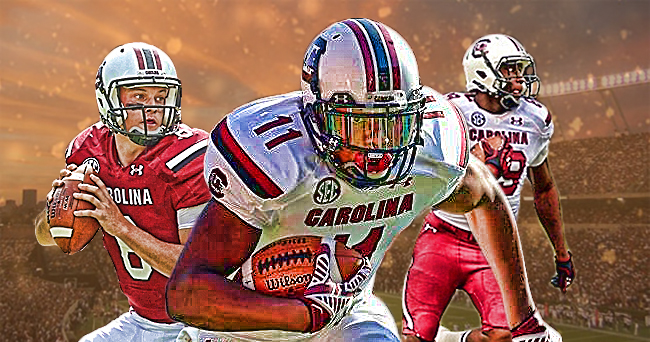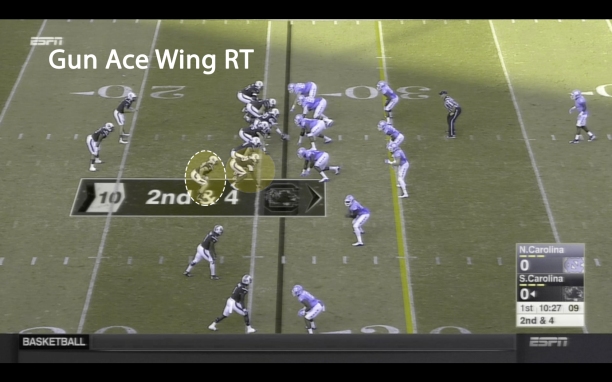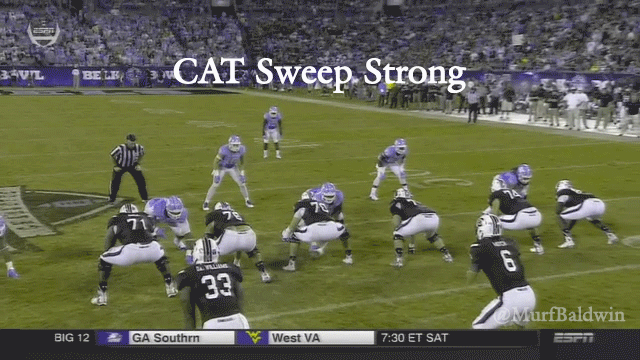
Film Study: The demise of Spurrier, South Carolina has been greatly exaggerated
By Murf Baldwin
Published:
If you’re a of supporter of the University of South Carolina, you had to have grown tired of the narrative surrounding your football team as being one of the worst in the conference with little-to-no chance to even compete in what most might consider a wide-open Eastern Division of the Southeastern Conference.
To further the point, countless media types have gone on record to state how they believe head coach Steve Spurrier is officially behind the times and, even worse, running on fumes.
It’s as if last season’s 7-6 record validated what most probably thought of the program under Spurrier to begin with: lack of talent, inability to develop a signal-caller into a top-flight quarterback and so-so coaching.
Never mind the 33-6 record the prior three seasons, those six losses in one year are a clear indicator of where the program is headed, right?
Sure four of those losses came down to only one possession — with a couple of razor-thin defeats to the SEC East champs, the University of Missouri (21-20), as well as the darlings of the offseason, the University of Tennessee (45-42 in overtime) — but that’s beside the point.
But leave it up to the “Head Ball Coach” to put things back in perspective as he did at SEC Media Days.
“We got rejuvenated,” Spurrier expressed. “We got new life. We were 7-6, same as Tennessee and the same as Arkansas, and I think they’re sort of celebrating big seasons last year. So we were celebrating also. We were doing cartwheels and high-fiving after that Independence Bowl game because it was a year that could have gone real south.”
Imagine that; two squads that are chic picks to win their respective divisions finished with the same exact record as the Gamecocks. It can’t be because the Vols and Razorbacks finished the year with wins in their bowl games, can it?
Well, the Cocks did that, too, with a win over a Miami team that had seven players who went on to be selected in the 2015 draft. So the HBC’s quote just goes to show you that prognostication is simply a matter of perspective from whoever is dishing or receiving the analysis.
While the naysayers may laugh, South Carolina’s season-opening win over a game North Carolina squad showed us that throwing dirt on Spurrier and his program is a wee-bit premature.
And it’s all a matter of perspective.
Philosophical Shift On Offense?
If I had a dollar for every time I heard USC wasn’t in possession of a QB who could execute Spurrier’s aggressive, vertical passing attack, I’d probably be able to afford to own this site instead of being an employee. (Which actually sounds like a great idea…)
I mean, people act as if it’s been twenty years since we saw the great Connor Shaw completely alter the thinking of what it takes to be a successful QB under one of the greatest offensive minds in the business, Spurrier. While past Spurrier QBs like Danny Wuerffel and Rex Grossman (don’t laugh) were indeed scheme-specific fits for a vertical-stretch scheme designed at forcing the defense to defend every quadrant of the field, Shaw was the master of improvisation, manufacturing first downs and explosive plays.
But moreover, it was the stylings of players like Marcus Lattimore and Mike Davis that truly made the scheme go — along with underrated offensive line personnel. I’m sorry, you don’t win that many games in three seasons with smoke and mirrors, you do it by controlling the line of scrimmage and enforcing your will.
And that’s exactly the formula that has many drooling over Bret Bielema and his Arkansas squad.
I’ve said it a thousand times, and I’ll say it again: The best way in football to minimize a talent disparity is through physical play. When you can control the line of scrimmage with punishing between-the-tackles runs, work the quick game to manufacture first downs and occasionally go vert, you don’t have to have a world beater at QB to compete in this day and age. And when you have a QB who can protect the ball while manufacturing plays of his own, you’re working with a formula that’ll give most teams fits.
The consensus coming out of camp was that most around the program weren’t completely sold on sophomore Connor Mitch, 6’3″, 211 pounds, being the QB that could get the train on the tracks; many questioned his arm strength and lack of an “it” factor. But at the very least, against the Tar Heels, he showed he could be a bus driver in an offense geared around physicality and churning out yards on the ground.
While “Cheetah” and “King” personnel, both of which puts upwards of three to four receivers on the field, have been the groupings of choice for Spurrier in the past, this version might operate best out of “Ace,” better known as “12 personnel,” as it provides versatility in the form of multiple tight ends/H-backs (fullback Rivers Bedenbaugh playing a hybrid role). When you run these heavier personnel groupings, you all but force the defense to counteract with its base personnel due to the threat of being outflanked in the run game. This means you force second-level defenders to be versatile enough to defend the pass while being disciplined enough to stay with their respective assignments.
The strength of the USC offense is undoubtedly its running backs, Brandon Wilds (6’2″, 216), David Williams (6’1″, 222 lbs) and Shon Carson (5’8″, 204 lbs), tight end Jerell Adams (6’6″, 231 lbs) and all-world receiver Pharoh Cooper (5’11”, 207 lbs) — all players who are extremely physical in nature. But we must not gloss over an underrated offensive line that that looked adept in a multi-concept scheme supported by some extreme physicality of its own (especially on the left side).
I saw gap-, man- and zone-blocking concepts, QB Power (Wildcat), Zone-reads (among others) in the run game, with hitches, sharp slants, crossers, swings and smokes in the passing game — all designed at manufacturing first downs.
Here’s a concept I really liked from co-offensive coordinators Steve Spurrier Jr. and Shawn Elliot: Using wider splits, the OL invited up field penetration leaving the “Y” target, Adams, free and clear for a TE screen. You rarely see screens to the “Y” in football although they seem very effective when called; encountering Adams out in space is something no third-level defender wants; great way to manufacture a first down while bringing a physical element to a simple play.
Here’s another way to drive defensive coordinators nuts: spotlight routes to Cooper. Operating out of “11 personnel,” USC got some split-flow action going by isolating Cooper — pictured in the above sequence in the slot — on crossers with the “Y” and “X” receiver to the left side of the formation; these type of plays cause a conflict of assignment for the defense and gets one of the absolute best open-field runners out in space; the more you can get the ball in his hands the more opportunities you will eventually create for others as he makes for a fantastic decoy in certain concepts.
But for the quick game to really take shape a team must be able to dominate at the point of attack. Moving the ball between the tackles with Wilds, Williams and even Cooper will be paramount for USC’s success, and you get a feeling it will be hard for the defenses on the schedule to dampen that diverse attack — especially when USC has found ways to bend the edges in the run game while still maintaining a bit of physicality.
Check out what I like to refer to as a CAT Sweep (center and tackle lead). It’s one thing to get to the edges in more of a speed manner, it’s a whole ‘nother ball game when you are accompanied by a 6’4″, 270-pound Alan Knott and a 6’9″, 314-pound Mason Zandi! (Not to mention you have Adams blocking a defensive end all the way to the stands.)
While many may pine for the days of the Fun & Gun offense of Steve Spurrier past, we may have to settle for USC being a tough, physical bunch that can control the line of scrimmage and manufacture first downs. It has playmakers out wide (watch out when “Deebo” Samuel puts it together) and in the backfield to go with a physical OL and TE. While a QB going 9-of-22 for 122 yards (with one touchdown and no interceptions) may be cause for pause, when you consider the style of play it’s par for the course as he only needs to limit turnovers and help manufacture first downs with his legs — something he can clearly do.
And when you factor in the physicality on the defensive side the ball, something I’ll focus on next time, counting out the Gamecocks in a wide-open SEC East makes little-to-no sense.
This is going to be an interesting season, folks.
Former linebacker/safety Murf Baldwin specializes in diving deep into the Xs and Os of the game with the goal of educating and entertaining while bringing fans closer to their team.











